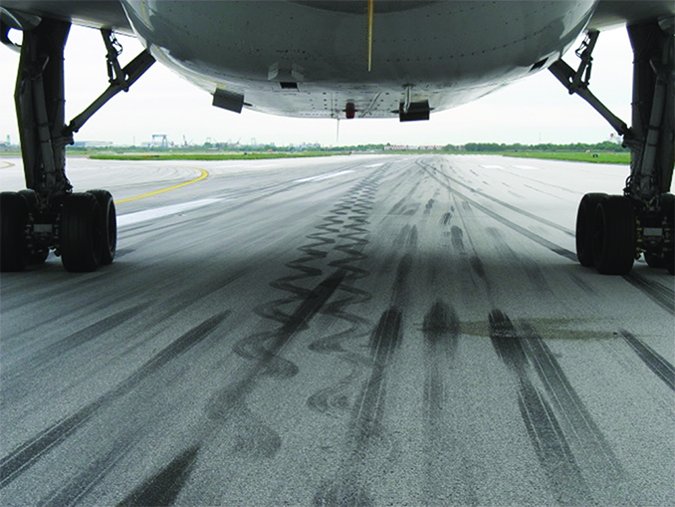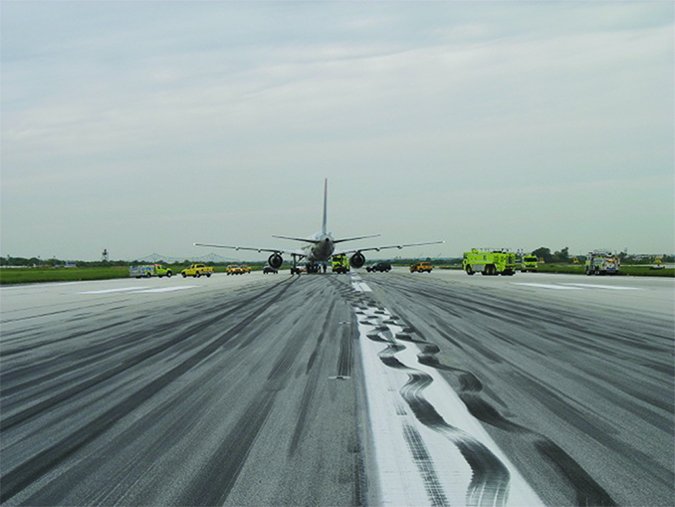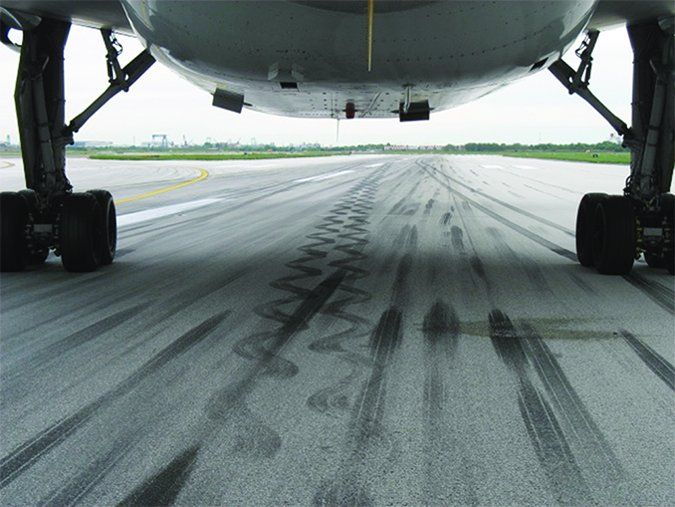Editor’s Note: This anonymous first-person account of a rejected Boeing 757 takeoff and what caused it offers several lessons about aircraft maintenance and ground handling, plus pre-flight inspections. Even though it involves a type most of us will only ride in, the lessons apply to anything that flies.
It was an early departure from the Philadelphia (Pa.) International Airport (KPHL) back to home plate. Thanks to an in-flight encounter with severe turbulence two days earlier, which injured three of my passengers, it had been a memorable three-day trip. I was the pilot flying the 757 for our last leg.
As we taxied out, we checked the winds one last time before taking Runway 27L. It was early morning, and ATC still was doing noise-abatement departures to the west even though the winds were out of the east at 7-8 knots. We had a tailwind limit of 10 knots, and we were fairly light, maybe just over 200,000 pounds. So we were good to go.
Rejection

With the tailwind, I saw no need to do a reduced-power takeoff. Perhaps it had something to do with a mental picture of me standing in front of a desk explaining why I used reduced power with a tailwind and rolled off the departure end of the runway trying to abort the takeoff after an engine failure. Those images tend toward encouraging one to use full, normal power. Screw the fuel savings.
We were cleared for takeoff, and I let the airplane roll slowly onto the runway, centered it and began the takeoff. There was no need to line up, come to a complete stop and run up the power while holding the brakes. So, once we were on the centerline, I pushed the power up and called for the first officer to engage the auto throttles in takeoff. We accelerated down the runway, rather quickly.
Our procedures call for the pilot not flying—the first officer in this case—to make a particular callout at 80 knots. We had not quite reached that speed when all hell broke loose: The aircraft and everything in it was undergoing the most violent movement I had ever experienced. The severe turbulence of just two days earlier now was a distant second in rough rides I had experienced in an aircraft. We were moving violently from side to side in a way I had never felt before. It became obvious to me that we were done taking off, much less flying.
My hand was on the throttles, and I yelled “ABORT!” as I retarded them. (I now brief my first officers on the first leg of every trip that, in the event of an abort, I will loudly call out the word “abort” and try not to scream it. I’m not sure what I sounded like that day.)
I disconnected the auto throttles, extended the speed brakes and deployed the thrust reversers. As we got stopped, we made a cabin announcement telling everyone we were fine, the airplane was stopped, and that they should remain seated and stand by for further instructions.
Our biggest fear in this scenario is that some 300-pound sumo wrestler will decide he wants off the airplane right now and shoves a flight attendant aside, opens the door and blows an emergency slide. With the engines still running. But we had no crazed sumo wrestlers that day. Everyone remained calm and in their seats.
Once we got stopped, Frank and I looked at each other and asked ourselves, “What the !!*&^%$# was that?” The cockpit looked like a bomb had gone off, with books, manuals, headsets, etc., thrown about. The vibration was so severe that cabin furnishings were dislodged throughout the airplane. Thankfully, there were no injuries.
The tower dispatched the crash crew once they saw the smoke from our tires as we initiated the abort. They arrived in what seemed like seconds and almost immediately could see what had occurred. The crash crew chief yelled up to me, “You oughtta see the skidmarks on this runway!” To which I replied,”You oughtta see the skidmarks in this cockpit!” The photos here tell some of the story.
Aftermath

The nosegear on a 757 is not unlike similar assemblies on other airplanes with oleo struts up front. There’s a scissors assembly that holds the upper portion of the strut to the bottom and helps prevent the lower portion from pivoting around the concentric tubes. But on this nosegear, the scissors had come apart, allowing the nosewheel to become free castering, much like a bad wheel on a grocery cart. Except the typical grocery cart rarely is accelerated to 80 knots.
At the time, my employer used what I call a T-fitting—a quick disconnect my employer refers to as torsion links—allowing mechanics to separate the scissors and pivot the nosegear beyond its normal limits as a way to stack airplanes and maximize space on tight maintenance ramps and in crowded hangars. It’s important to note that our ramp people—who are not the same people as our mechanics—do not know what these are, are not trained to disconnect the scissors and do not use such procedures to maneuver the airplanes on the ground.
But we don’t use my employer’s ramp people in Philadelphia. Instead, we use contract employees, who are employed by a different carrier/company. Those contract workers also move jets and other types around for the carriers who serve KPHL. It’s my understanding normal procedures do call for disconnecting the nose gear scissors when ramping some airplanes. Just not ours.
So, we think the contract workers disconnected the scissors on this airplane when they moved it overnight from the arrival gate to the one we used to board. Then, they incorrectly reconnected it. At first, the contract workers denied having even touched the airplane. But when the jet comes in to Gate A at 2200 local and goes out the next morning at 0700 from Gate B, it’s hard to say you didn’t touch it.
Lessons
Airline ops just seem different than personal aviation. The reality is both types of aviation require us to be on our toes, and abort a takeoff—safely—when things aren’t right. It’s always better to deal with a problem on the ground than in the air. Could a better pre-flight have helped? Maybe. The before-and-after pictures show it could have gone either way.
The airplane was inspected thoroughly by our mechanics and put back in service a day or so later. My employer now safety-wires those fittings so rampers know to leave them alone. A good idea.
Capt. Speaking is a line pilot for a major U.S. airline. He holds an airline transport certificate and type ratings for the Boeing 757/767, plus other wallet candy.




